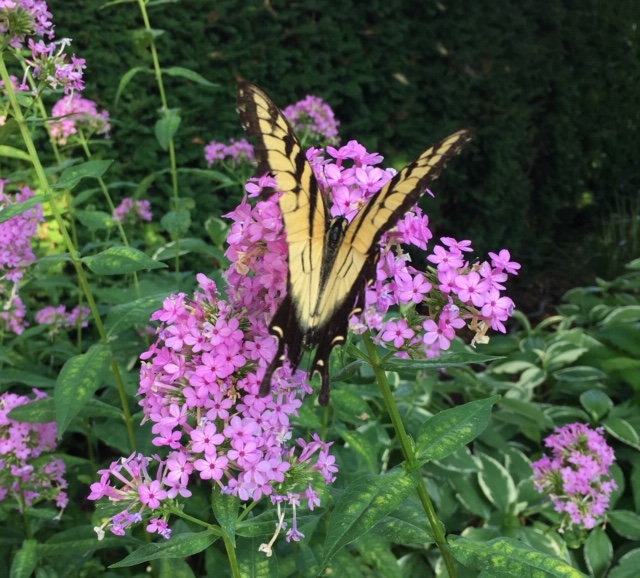
It must be spring: I’ve put in my order for the local native plant sale.
Over the past few years, I’ve been adding native plants to my garden whenever I can. Many, such as the woodland wildflowers I nurture in my shady garden, are lovely. Native plants also support native animals—from insects to birds and mammals—and I want to do my bit to provide a little habitat where I can. Shrubs provide shelter and berries for birds, and support insects birds need to feed to their young. Flowers offer nectar and pollen to swallowtail butterflies and a few of my state’s 3,000 species of native bees.
It’s a lot easier to get native plants than it used to be. When I was a kid, Midwestern prairie plants were considered weeds and grew only in untended vacant lots. Now, there are entire nurseries devoted to them, and many good independent garden centers have a section for local native plants alone.
In plant catalogs, the adjective “native” now drives sales almost as powerfully as the word “new.” That has led horticulture companies to call some varieties “native” that bear little resemblance to their wild ancestors. In fact, some of these so-called native plants have been so deformed by selective breeding for unnatural colors and shapes that it’s hard to see how a bee or butterfly could find nectar or pollen in their blooms.
Fortunately, if you want a real wild species, there are native plant sales, usually run by nonprofit groups. That’s how I shop for spring wildflowers like trillium and sharp-lobed hepatica for my shady garden and nectar plants for my little sun patches. I’ve tried to grow these spring ephemeral wildflowers from seed, but they are slow to germinate and need more greenhouse space, time and attention than I am equipped to give. It’s a task I’m happy to leave to experts.
Choosing the right native plants can be tricky. Some gardeners simply assume that any plant that was growing in the area a couple of centuries ago is superbly suited for their gardens now. There’s just one problem: The gardens aren’t what they used to be.
We’re usually gardening in former construction sites where the soil is thoroughly disrupted and nothing like what native plants evolved for. In Chicago, it’s mainly sticky clay with a generous seasoning of construction debris, very unlike the rich soil of a prairie or the thick humus of a forest floor.

Though most native plants on the market around here are sun lovers from wide-open prairies, sun is hard to come by in the city and older suburbs. Prairie plants can’t survive in the shade of buildings and fast-growing Eurasian tree species.
Native plant gardening requires a clear-headed assessment of the conditions of the garden today, not 250 years ago. For example, I know I can’t plant tallgrass prairie species in the narrow sun patch between the driveway and the sidewalk, because they’ll flop. I know my main garden doesn’t have enough sun for prairie species. It only supports woodland wildflowers because I’ve been amending the grim clay soil with fallen leaves for many years.
The plant that can thrive in your garden today may not be one that grew in that spot long ago, because the spot has changed. But whatever native plants can find thrive in today’s conditions will provide a little bit of habitat to some animal and add to the diversity of life in the city.


